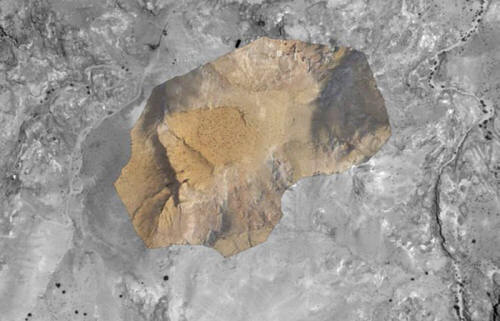|

by Alexa Erickson
June 14, 2016
from
Collective-Evolution Website

A monumental structure has been discovered amongst the world-famous
ruins of
Petra, Jordan.
Using Google Earth, satellite
imagery, and drones, researchers detected a structure the size of
an Olympic-size pool,
"hiding in plain sight" just "south
of the city center, and archaeologists have missed this for 150,
200 years," according to
researcher Sarah Parcak.
Half a million tourists come to Petra
annually, with the ruins drawing huge crowds of visitors.
While the purpose of the structure
remains unclear, Sarah Parcak
says,
"We know it's large, it's
significant, it's important.
It probably would have had some kind
of a public function… Could it be used for religious purposes?
Was it some sort of public administrative structure?
I wish I knew."
A UNESCO world heritage site, Petra is
known for its incredibly stunning structures featuring rose-colored
rock faces.
The setting has made its way into such
films as Indiana Jones and the Last Crusade.
"When we started this project, the
idea was to apply very high-resolution 0.5 meter, which is a
foot and a half, satellite imagery to look for potential new
features at Petra, just because it had never been done before,"
explains Parcak.
"And we thought that maybe we'd find
some small stone structures or roads, but we didn't think at all
that we would find anything large, just because Petra is a world
heritage site and it's been worked on intensively for nearly 200
years."
Parcak notes that satellite imagery
allows for the recording of information in different parts of the
light spectrum that cannot be seen with human eyes.
She originally dismissed the large
structure when it popped up, but decided to pass it on to her
colleague Christopher
Tuttle, who was working on the ground in Petra and
had discovered foundations and column bases at the site.
While the structure's condition cannot
be determined until it's excavated, it is known that it consists of
a small platform surrounded by a large rectangular platform. It is
thought that the small platform may have had a row of sandstone drum
columns.
It also has a tiny structure on it that
measures about 27 square feet.
"In terms of the size of the
structure, its shape, its orientation, where it's located,
there's nothing else like it there," Parcak says.



The researchers think the structure was
built,
"when Petra was flourishing as the
capital city of the
Nabataean kingdom, possibly as
early as the mid-second century B.C.E."
The discovery has created an uproar of
questions about its functions, and researchers have answered with a
newly published paper (Hiding
in Plain Sight - The Discovery of a New Monumental Structure at
Petra, Jordan) in the Bulletin of the American
Schools of Oriental Research, saying:
"The amount of effort to construct
the site was massive, yet the focal building itself is quite
small. The platform is located relatively close to the ancient
city center but in a spot where easy access from the city center
is not readily apparent."
The excavation will likely occur over
the next couple of years, and hopefully will answer some of the
mystery surrounding the structure.
|





